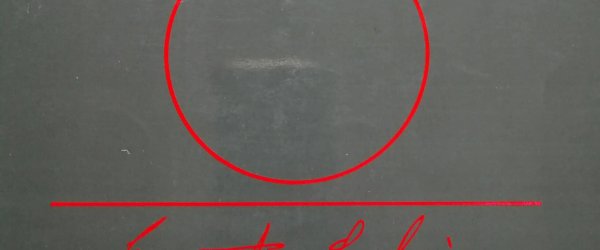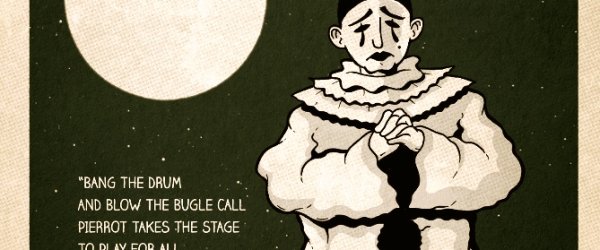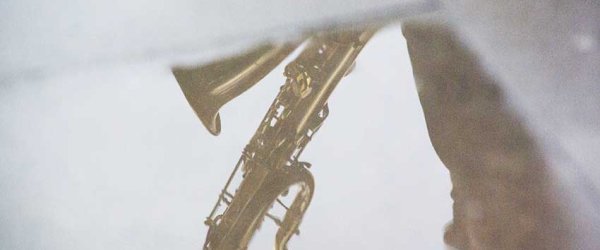
Picture from the album “Made in BCN” (LMG-2154, 2018). ©Jesús Llungueras
In this post, I want to highlight the original version of VIA, composed in 2013 for solo baritone saxophone. This version includes theatrical elements that add an extra appeal. I encourage you to discover it!
The Composer
JOAN MAGRANÉ (Reus, 1988) received his first composition lessons by Ramon Humet. He subsequently studied at ESMUC (Barcelona) with Agustín Charles, in the Kunst Universität (Graz) with Beat Furrer and in the CNSMD (Paris) with Stefano Gervasoni.
Some poetic and artistic references —from Arnaut Daniel to Francesc Garriga, from Albrecht Dürer to Miquel Barceló— are crucial in his creative process. His works have been performed by the Ensemble Intercontemporain, Quatuor Diotima, Neue Vocalsolisten, Quartet Gerhard, BBC Scottish Symphony Orchestra, OBC, Orquesta de la RTVE and many others.
He has been awarded several international awards including the XXXI Queen Sophia Composition Prize (2014). You can find some of his pieces edited by Éditions Durand (FRA) and Ficta (CAT).
Click here to read more about the composer.
Details of the work
Publisher: Contact the composer (joan.magrane@yahoo.es)
Duration: Around 10:00
Range (written): A2 – F#5
TECHNIQUES: Some fast excerpts. Slaps. Bisbigliandi. Trills and tremolos. Varied dynamics (specially in ppp) and timbres. Large intervals. Voice. Growl. Key noises. Air sounds and breathing. Tempo oscillations. Control of the multiphonics in ppp. Portamenti.
PERFORMANCE: To play very delicate and phrasing well the portamenti. To play with intensity the central section and to emphasize the recitation of the text.
Meaning and structure of Via
The main idea of VIA is the continuous, fluctuating, and undulating melodic line that subtly guides the listener through the different sections of the piece. This work emerged as a first approach to the world of the saxophone. For all I had imagined, the baritone saxophone seemed the most suitable instrument to me: the instability and lyricism of the high register and, at the same time, the forcefulness, depth, and richness of the low register. (Joan Magrané, 2018)
Although it was originally composed for baritone saxophone in 2013, it was first premiered in the soprano saxophone version in January 2015. Later, in December 2017, I premiered the original version in a concert in Bertrange (Luxembourg).
Both versions are practically identical, except for changes in the central section. There, the baritone version contains some slap in the low register, which were replaced by multiphonics in the soprano saxophone version. The baritone version retains a text taken from Book 11 of Vergil’s AENEID. You must recit this text in a whispering voice while clearly articulating the consonants. Here it is, both in the original Latin and its translation, in case it inspires you when working on it and performing it in concert.
Summe deum, sancti custos Soractis Apollo, quem primi colimus, cui pineus ardor acervo pascitur et medium freti pietate per ignem cultores multa preminus vestigia pruna, da, pater, hoc nostris abolevi dedecus armis, omnipotens (…).
Highest of gods, Apollo, guardian of holy Soracte, whose chief followers are we for whom the blaze of the pine-wood fire is fed, and who as worshippers, confident in our faith, plant our steps on deep embers among the flames, all-powerful father grant that this shame be effaced by our weapons (…)
(English translation by A. S. Kline ©2002 from Poetry in Translation)
Both versions give a very different character to the same piece: the soprano version sounds ethereal and delicate, while the baritone version sounds forceful and intense. In my opinion, however, the inevitable key noises when producing the bisbigliandi are too present in the baritone version, for obvious reasons. Perhaps it wouldn’t be a bad idea to replace the bisbigliandi with vibratos and oscillations to reproduce that timbral fluctuation.
—
Would you like to know more about VIA by Joan Magrané? Would you like to work on it? Don’t hesitate to contact me for more questions.
Joan Martí-Frasquier
Barcelona, May 2018
Update: March 2025





